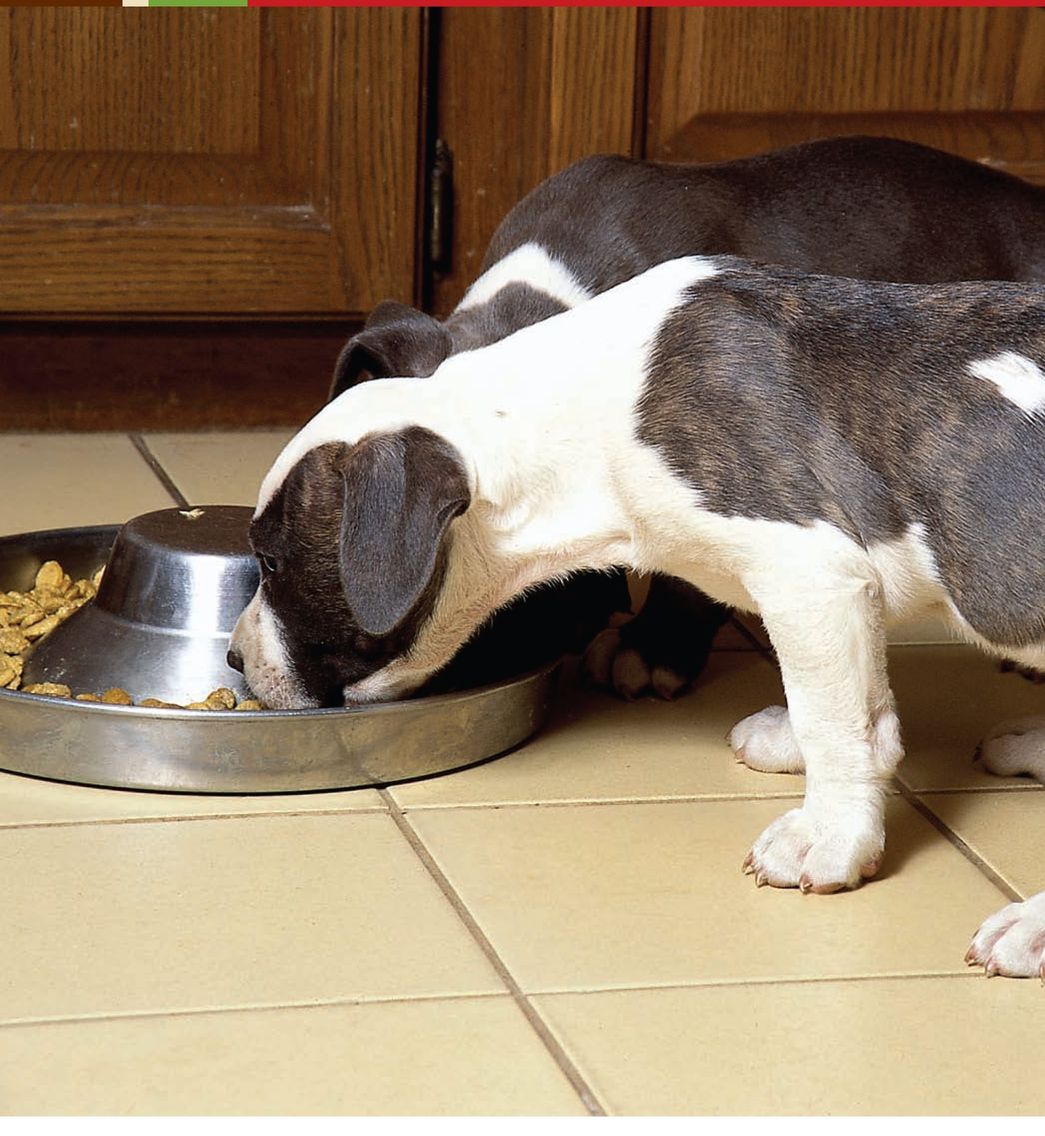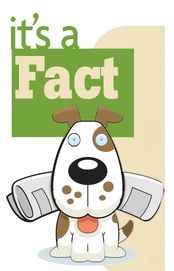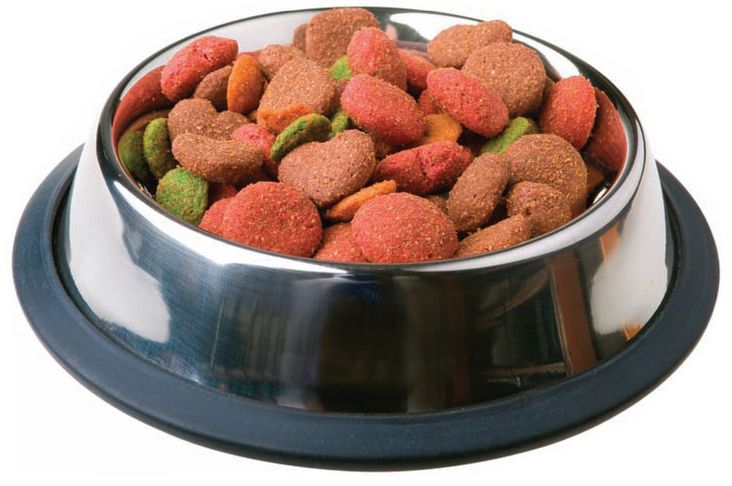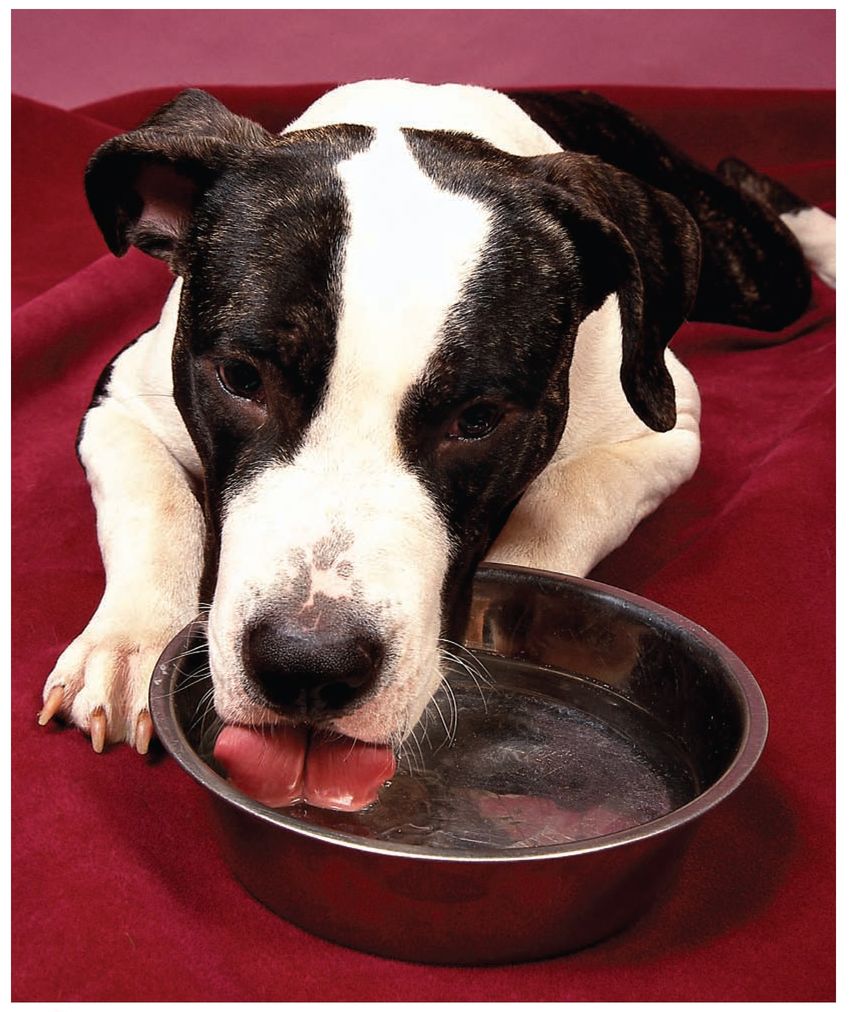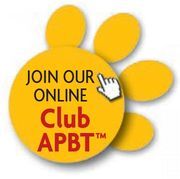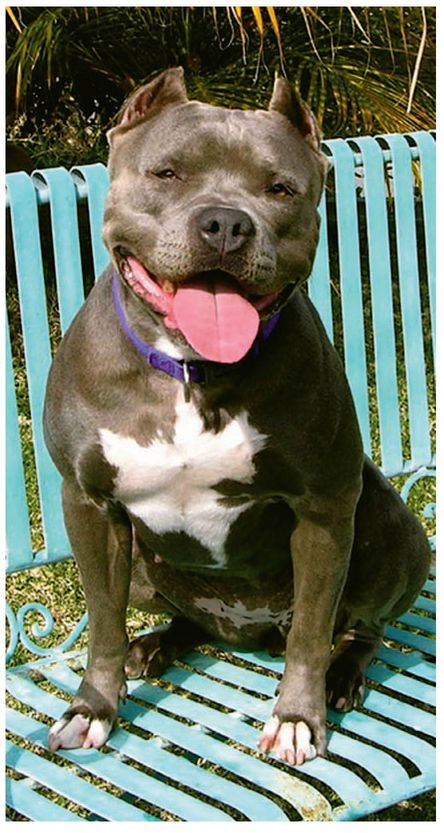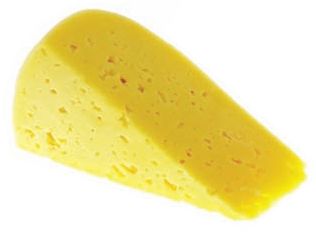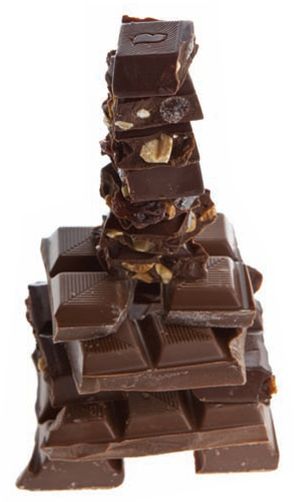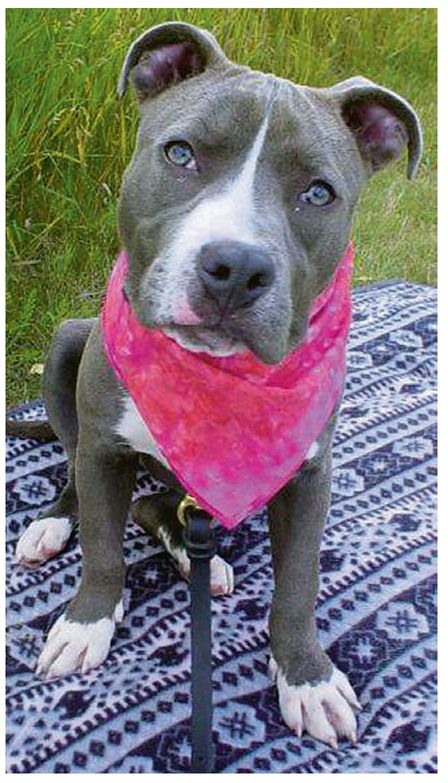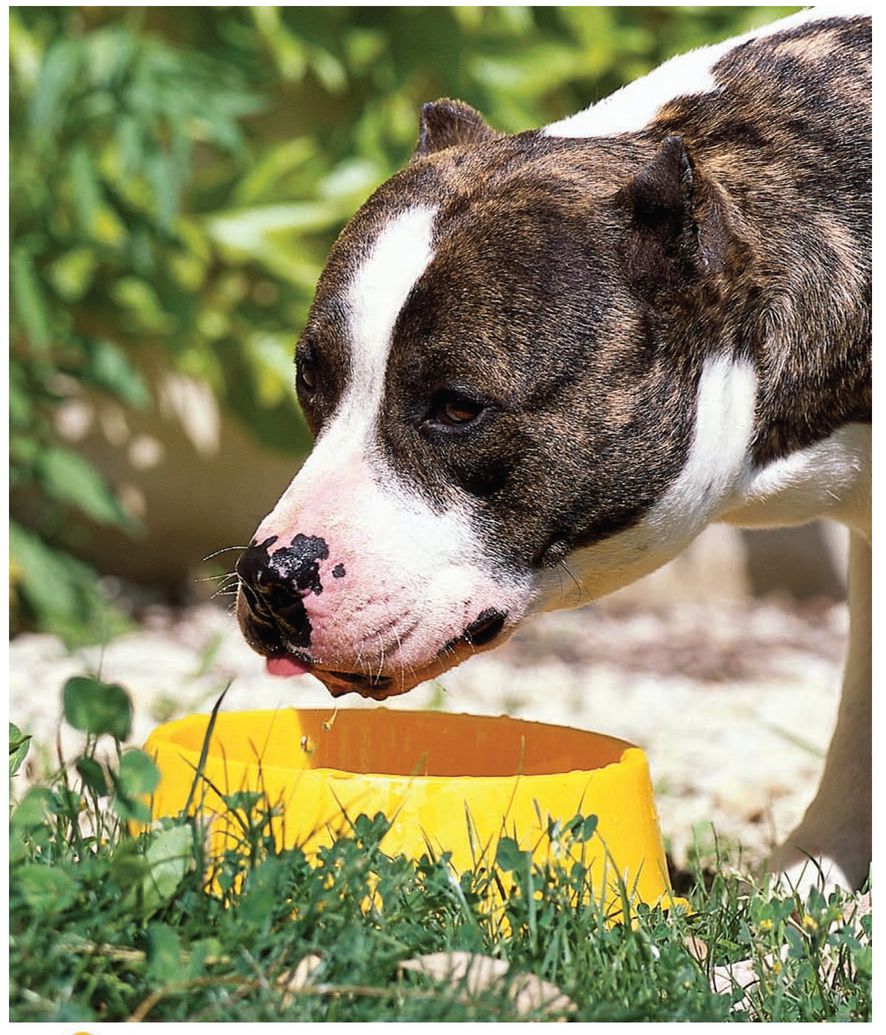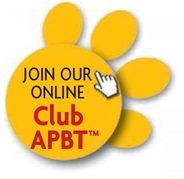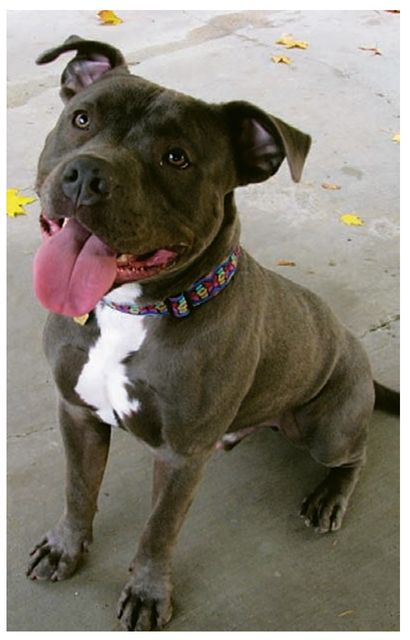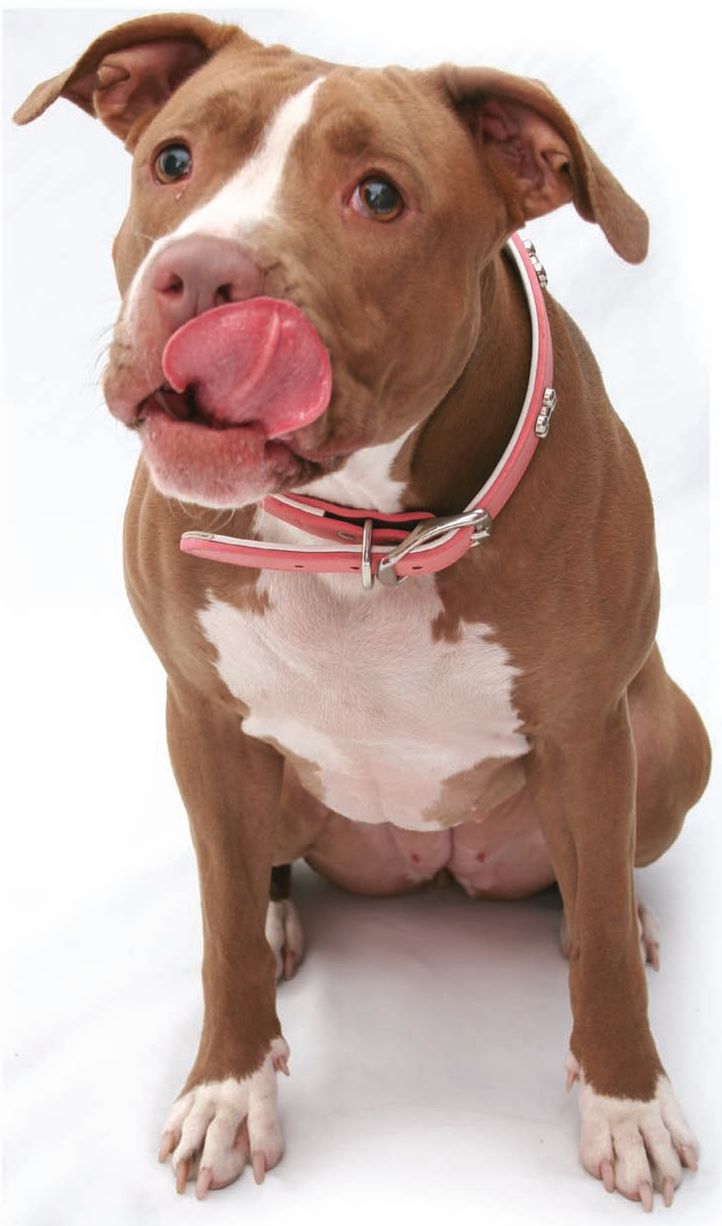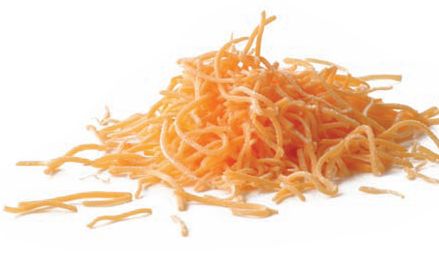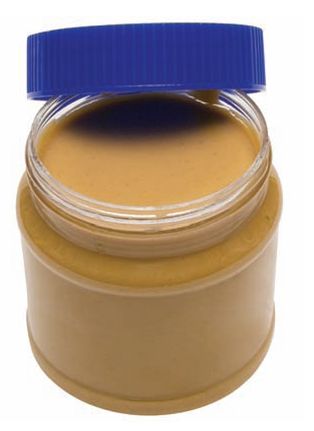CHAPTER 8
THIS DOG’S DIET
You have probably heard it a thousand times: You are what you eat. Believe it or not, it is very true especially for dogs. Dogs are what you feed them because they have little choice in the matter. Even smart owners, who truly want to feed their dogs the best, often cannot do so because they don’t know which foods are best for their dogs.
BASIC TYPES
Dog foods are produced in various types: dry, wet (canned), semimoist and frozen.
Dry food is useful for the cost-conscious owner because it tends to be less expensive than the others. This food also contains the least fat and the most preservatives. Dry food is bulky and takes longer to eat than other foods, so it’s more filling.
Wet food — available in cans or foil pouches — is usually 60 to 70 percent water and is more expensive than dry food. A palatable source of concentrated nutrition, wet food also makes an excellent supplement for underweight dogs or those recovering from an illness. Some owners add a little wet food to dry food to increase its appeal, and dogs gobble up this mixture.
Bones can cause gastrointestinal obstruction and perforation, and may be contaminated with salmonella or E. coli. Leave them in the trash and give your dog a nylon bone toy instead.
Semimoist food is flavorful but usually contains lots of sugar, which can lead to dental problems and obesity. It’s not a good choice for your dog’s main diet.
Likewise, frozen food, which is available in cooked and raw forms, is usually more expensive than wet food. The advantages of frozen food are similar to those of wet food.
The amount of food your APBT needs depends on a number of factors, such as age, activity level, food quality, reproductive status and size. What’s the easiest way to figure it out? Start with the manufacturer’s recommended amount, then adjust it according to your dog’s response. For example, feed the recommended amount for a few weeks and if your APBT loses weight, increase the amount by 10 to 20 percent. If your dog gains weight, decrease the amount. It won’t take long to determine the amount of food that keeps your little friend in optimal condition.
NUTRITION 101
All pit bulls (and every dog breed, for that matter) need proteins, carbohydrates, fats, vitamins and minerals for their optimal growth and health.
■ Proteins are used for growth and the repair of muscles, bones and other bodily tissues. They’re also used for the production of antibodies, enzymes and hormones. All dogs need protein, but it’s especially important for puppies because they grow so rapidly. Protein sources include various types of meat, meat meal, meat byproducts, eggs, dairy products and soybeans.
■ Carbohydrates are metabolized into glucose, the body’s principle energy source. Carbohydrates are available as sugars, starches and fiber.
• Sugars (simple carbohydrates) are not suitable nutrient sources for dogs.
• Starch — a preferred type of carbohydrate in dog food — is found in a variety of plant products. Starches must be cooked in order to be digested.
• Fiber (cellulose) — also a preferred type of carbohydrates in dog food — isn’t digestible, but it helps the digestive tract function properly.
■
Fats are also required for energy and play an important role in skin and coat health, hormone production, nervous system function and vitamin transport. Fat increases the palatability and the calorie count of puppy and dog food, which can contribute to serious health problems, such as obesity, for puppies or dogs who are allowed to overindulge. Some foods contain added amounts of omega fatty acids such as docosohexaenoic acid, a compound that may enhance brain development and learning in pit bull puppies but is not considered an essential nutrient by the Association of American Feed Control Officials (
www.aafco.org). Fats used in dog foods include tallow, lard, poultry fat, fish oil and vegetable oils.
Believe it or not, during your pit bull’s lifetime, you’ll buy a few thousand pounds of dog food! Go to
DogChannel.com/Club-APBT and download a chart that outlines the cost of dog food.
■ Vitamins and minerals participate in muscle and nerve function, bone growth, healing, metabolism and fluid balance. Especially important for your puppy are calcium, phosphorus and vitamin D, which must be supplied in the right balance to ensure proper development of bones and teeth.
Just as your dog needs proper nutrition from his food, water is an essential nutrient, as well. Water keeps a dog’s body properly hydrated and promotes normal function of the body’s systems. During housetraining, it is necessary to keep an eye on how much water your American Pit Bull Terrier is drinking, but once he is reliably trained, he should have access to clean, fresh water at all times, especially if you feed him dry food. Make sure that the dog’s water bowl is clean, and change the water often.
CHECK OUT THE LABEL
To help you get a feel for what you are feeding your dog, start by taking a look at the nutrition labels. Look for the words “complete and balanced.” This tells you that the food meets specific nutritional requirements set by the AAFCO for either adults (“maintenance”) or puppies and pregnant/lactating females (“growth and reproduction”). The label must state the group for which it is intended. If you’re feeding a puppy, choose a “growth and reproduction” food.
The label also includes a nutritional analysis, which lists minimum protein, minimum fat, maximum fiber and maximum moisture content, as well as other information. (You won’t find carbohydrate content because it’s everything that isn’t protein, fat, fiber and moisture.)
The nutritional analysis refers to crude protein and crude fat — amounts that have been determined in the laboratory. This analysis is technically accurate, but it does not tell you anything about digestibility — how much of the particular nutrient your APBT can actually use. For information about digestibility, contact the manufacturer (check the label for a phone number and website).
TRY THIS
Dogs of all ages love treats and table food, but these goodies can unbalance your pit bull’s diet and lead to a weight problem if you don’t choose and feed them wisely. Table food, whether fed as a treat or as part of a meal, shouldn’t account for more than 10 percent of your dog’s daily caloric intake. If you plan to give your APBT treats, be sure to include “treat calories” when calculating the daily food requirement, so you don’t end up with a pudgy pup!
When shopping for packaged treats, look for ones that provide complete nutrition. They’re basically dog food in a fun form. Choose crunchy goodies for chewing fun and dental health. Other ideas for tasty treats include:
✓ small chunks of cooked, lean meat
✓ dry dog food morsels
✓ cheese
✓ veggies (cooked, raw or frozen)
✓ breads, crackers or dry cereal
✓ unsalted, unbuttered, plain, popped popcorn Some foods, however, can be dangerous or even deadly to a dog. The following can cause digestive upset (vomiting or diarrhea) or toxic reactions that could be fatal:
✘ avocados: can cause gastrointestinal irritation, with vomiting and diarrhea, if eaten in sufficient quantity
✘ baby food: may contain onion powder; does not provide balanced nutrition for a dog or pup
✘ chocolate: contains methylxanthines and theobromine, caffeine-like compounds that can cause vomiting, diarrhea, heart abnormalities, tremors, seizures and death. Darker chocolates contain higher levels of the toxic compounds.
✘ eggs, raw: whites contain an enzyme that prevents uptake of biotin, a B vitamin; may contain salmonella
✘ garlic (and related foods): can cause gastrointestinal irritation and anemia if eaten in sufficient quantity
✘ grapes: can cause kidney failure if eaten in sufficient quantity (the toxic dose varies from dog to dog)
✘ macadamia nuts: can cause vomiting, weakness, lack of coordination and other problems
✘ meat, raw: may contain harmful bacteria such as salmonella or E. coli
✘ milk: can cause diarrhea in some puppies
✘ onions (and related foods): can cause gastrointestinal irritation and anemia if eaten in sufficient quantity
✘ raisins: can cause kidney failure if eaten in sufficient quantity (the toxic dose varies from dog to dog)
✘ yeast bread dough: can rise in the gastrointestinal tract, causing obstruction; produces alcohol as it rises
Virtually all commercial puppy foods exceed the AAFCO’s minimal requirements for protein and fat, the two nutrients most commonly evaluated when comparing foods. Protein levels in dry puppy foods usually range from about 26 to 30 percent; for canned foods, the values are about 9 to 13 percent. The fat content of dry puppy foods is about 20 percent or more; for canned foods, it’s 8 percent or more. (Dry food values are larger than canned food values because dry food contains less water; the values are actually similar when compared on a dry matter basis.)
Finally, check the ingredients on the label, which lists the ingredients in descending order by weight. Manufacturers are allowed to list separately different forms of a single ingredient (e.g., ground corn and corn gluten meal). The food may contain things like meat byproducts, meat and bone meal, and animal fat, which probably won’t appeal to you but are nutritious and safe for your dog. Higher quality foods usually have meat or meat products near the top of the ingredient list, but you don’t need to worry about grain products as long as the label indicates that the food is nutritionally complete. Dogs are omnivores (not carnivores, as commonly believed), so all balanced dog foods contain animal and plant ingredients.
STAGES OF LIFE
When selecting your dog’s diet, three stages of development must be considered: the puppy stage, the adult stage and the senior stage.
Puppy Diets: Pups instinctively want to nurse, and a normal puppy will exhibit this behavior from just a few moments following birth. Puppies should be allowed to nurse for about the first six weeks, although from the third or fourth week, the breeder will begin to introduce small portions of suitable solid food. Most breeders like to introduce alternate milk and meat meals initially, building up to weaning time.
If you’re feeding a puppy food that’s complete and balanced, your pit bull youngster doesn’t need any dietary supplements such as vitamins, minerals, or other types of food. Dietary supplementation could even harm your puppy by unbalancing his diet. If you have questions about supplementing your pit bull’s diet, consult your veterinarian.
Feeding your dog is part of your daily routine. Take a break, and have some fun online and play “Feed the APBT,” an exclusive game found only on
DogChannel.com/Club-APBT — just click on “Games.”
How can you tell if your pit bull is fit or fat? When you run your hands down your pal’s sides from front to back, you should be able to easily feel his ribs. It’s OK if you feel a little body fat (and, of course, a lot of hair), but you should not feel huge fat pads. You should also be able to feel your APBT’s waist — an indentation behind the ribs.
By the time puppies are 7 or a maximum of 8 weeks old, they should be fully weaned and fed solely a proprietary puppy food. Selection of the most suitable, good-quality diet at this time is essential, for a puppy’s fastest growth rate is during the first year of his life. Seek advice about your dog’s food from your veterinarian. The frequency of meals will be reduced over time, and when a young dog has reached about 10 to 12 months of age, he should be switched to an adult diet.
Puppy and junior diets can be balanced for the needs of your APBT so that, except in certain circumstances, additional vitamins, minerals and proteins will not be required.
How many times a day does your APBT need to eat? Puppies have small stomachs and high metabolic rates, so they need to eat several times a day in order to consume sufficient nutrients. If your puppy is younger than 3 months old, feed him four or five meals a day. When your little buddy is 3 to 5 months old, decrease the number of meals to three or four. At 6 months of age, most puppies can move to an adult schedule of two meals a day. If your APBT is prone to hypoglycemia (low blood sugar), a veterinarian may recommend more frequent meals.
Adult Diets: A dog is considered an adult when he has stopped growing. Rely on your veterinarian or dietary specialist to recommend an acceptable maintenance diet for your dog. Major dog food manufacturers specialize in this type of food, and smart owners must select the one best suited to their dogs’ needs. Do not leave food out all day for “free-choice” feeding, as this freedom inevitably translates to inches around your dog’s waist.
Senior Diets: As dogs get older, their metabolism changes. An older dog usually exercises less, moves more slowly and sleeps more. This change in lifestyle and physiological performance requires a change in diet. Because these changes take place slowly, they might not be recognizable. These metabolic changes increase the tendency toward obesity, requiring an even more vigilant approach to feeding. Obesity in an older dog compounds the health problems that already accompany old age.
A smart APBT owner reads all the nutrition labels on a package of dog food to ensure that his or her pit bull is getting all his vitamins and minerals.
As your APBT gets older, few of his organs function up to par. The kidneys slow down, and the intestines become less efficient. These age-related factors are best handled with a change in diet and a change in feeding schedule to give smaller portions that are more easily digested.
There is no single best diet for every older dog. While many older dogs will do perfectly fine on light or senior diets, other dogs will do better on special premium diets such as lamb and rice. A smart owner will be prudent and sensitive to his or her senior pit bull’s diet, and this will help control other health complications that may arise with your old friend.
Because semimoist food contains lots of sugar, it isn’t a good selection for your American Pit Bull Terrier’s main menu. However, it is great as a yummy snack. Try forming the food into little meatballs for a once-a-week treat! He’ll love ya for it!
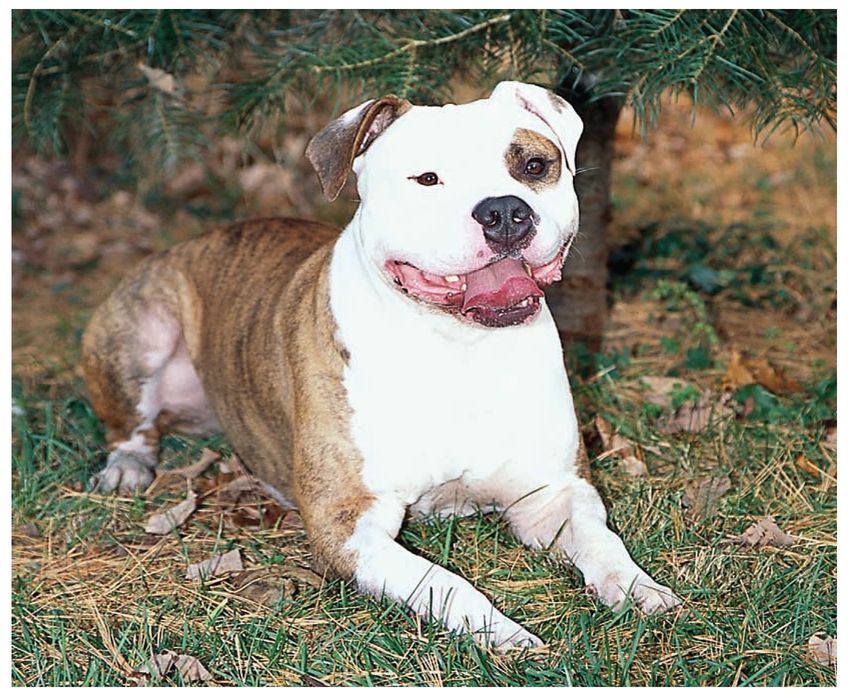
TRY THIS
These delicious, dog-friendly recipes will have your furry friend smacking his lips and salivating for more. Just remember: Treats aren’t meant to replace your dog’s regular meals. Give your pit bull snacks sparingly and continue to feed him nutritious, well-balanced meals.
Cheddar Squares
⅓ cup all-natural applesauce
⅓ cup low-fat cheddar cheese, shredded
⅓ cup water
2 cups unbleached white flour
In a medium bowl, mix all wet ingredients. In a large bowl, mix all dry ingredients. Slowly add the wet ingredients to the dry mixture.
Mix well. Pour batter into a greased 13x9x2-inch pan. Bake at 375-degrees Fahrenheit for 25 to 30 minutes. Bars are done when a toothpick inserted in the center and removed comes out clean. Cool and cut into bars. Makes about 54, 1½-inch bars.
Peanut Butter Bites
3 tablespoons vegetable oil
¼ cup smooth peanut butter, no salt or sugar
¼ cup honey
1 ½ teaspoons baking powder
2 eggs
2 cups whole wheat flour
In a large bowl, mix all ingredients until dough is firm. If the dough is too sticky, mix in a small amount of flour. Knead dough on a lightly floured surface until firm. Roll out dough half an inch thick and cut with cookie cutters. Put cookies on a cookie sheet half an inch apart. Bake at 350-degrees Fahrenheit for 20 to 25 minutes. When done, cookies should be firm to the touch. Remove cookies from the oven, and leave cookies for one to two hours to harden. Makes about 40, 2-inch-long cookies.
